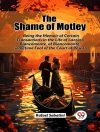George W. M. Reynolds’ ‘The Mysteries of London’ unfolds as a rich tapestry of Victorian society, intricately weaving together tales that expose the stark contrasts between the opulence of the wealthy and the harrowing struggles of the impoverished. Spanning four volumes, this serialized novel employs a dramatic and often sensational literary style that mirrors the serialized format of the era, drawing readers into the labyrinthine underbelly of London with vivid descriptions and a diverse cast of characters. The narrative navigates themes of crime, morality, and social justice, portraying a city rife with both corruption and a fervent desire for reform, thus placing it firmly within the context of 19th-century social realism and melodrama. The author, Reynolds, was a contemporary of Dickens and was deeply influenced by the social issues of his time. His own experiences with poverty and his commitment to social reform are evident in his work, which often seeks to illuminate the plight of the downtrodden. Reynolds’ background as a radical thinker and journalist further informs his narrative style, infusing his prose with both urgency and compassion. This compelling multi-volume saga is highly recommended for readers interested in the intersection of literature and social commentary. ‘The Mysteries of London’ not only entertains but challenges the reader to reflect on the social inequalities of the era, making it a significant contribution to Victorian literature and an essential read for anyone exploring the themes of class and justice.
Yazar hakkında
George William Mac Arthur Reynolds, a British author and journalist, was born on July 23, 1814, and died on June 19, 1879. Regarded as a pioneering figure in Victorian popular fiction, Reynolds is best known for his lengthy serial novel, ‘The Mysteries of London’ (Vol. 1-4), which was published between 1844 and 1856. A contemporary of Charles Dickens, Reynolds’s work was marked by a sensationalist and melodramatic style that captivated the working-class readership of the time. ‘The Mysteries of London’ is an expansive and intricate narrative that explores the dark underbelly of London society—from its opulent upper classes to the vicious criminal underworld. A fierce critic of social injustice and moral hypocrisy, Reynolds imbued his literature with pointed social commentary, which contributed to his immense popularity during the 19th century. While less well-known today, Reynolds’s prolific output and innovative use of the serialized novel format significantly influenced the development of popular fiction in the Victorian era. His exploration of themes such as crime, poverty, and the corrupting influence of power continues to be of scholarly interest, and his work remains a valuable window into the social fabric of 19th-century London.












